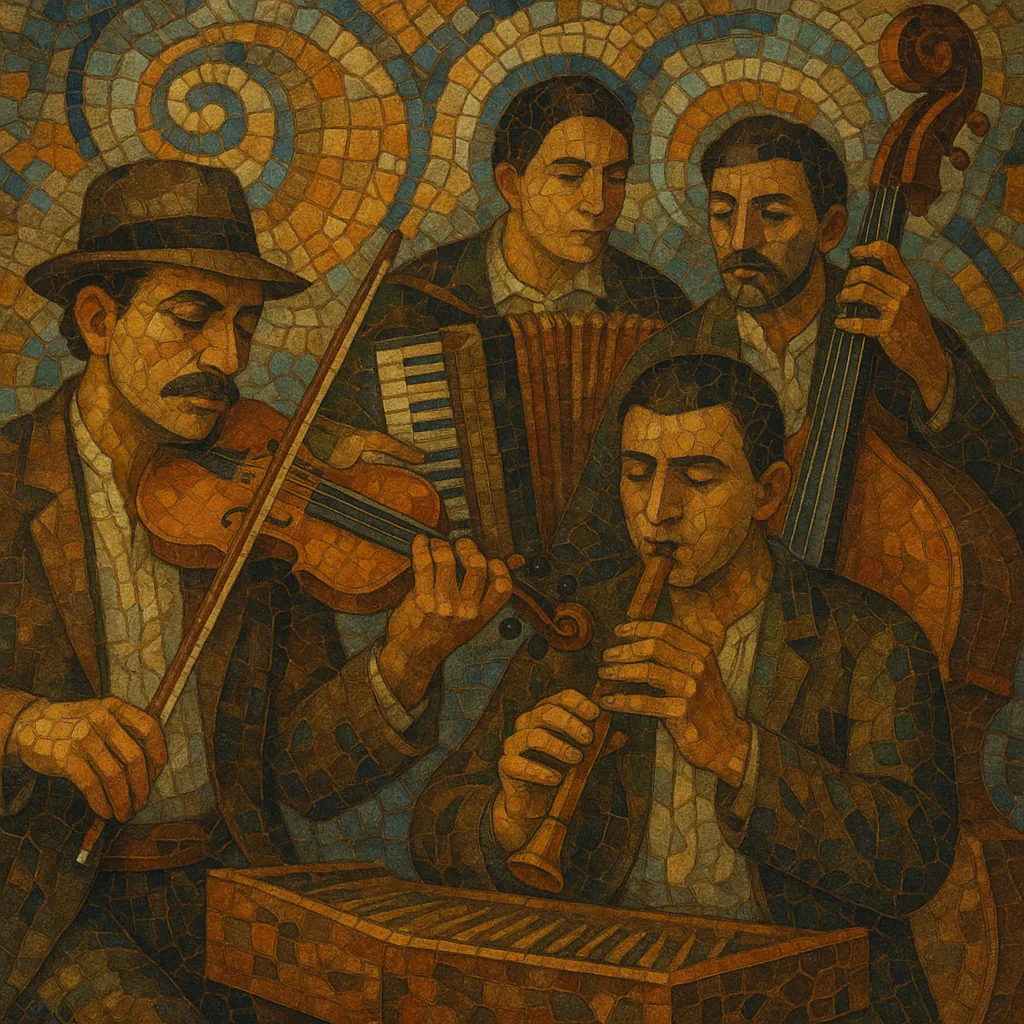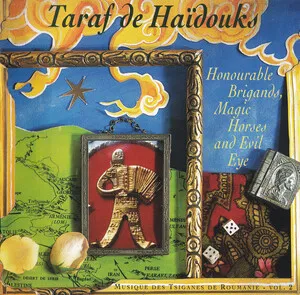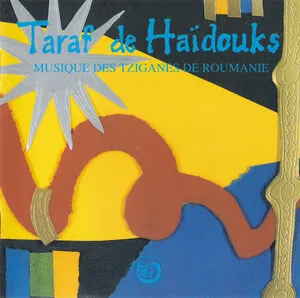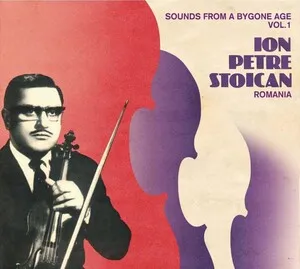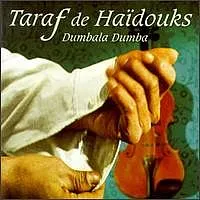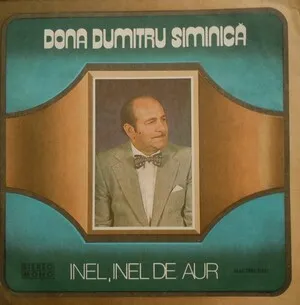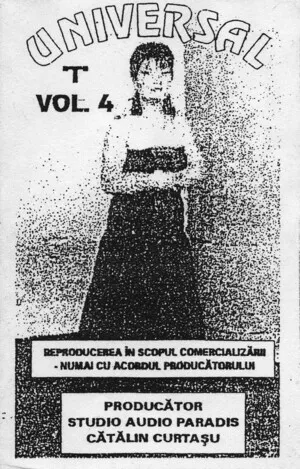Muzică lăutărească is the urban, professional music of Roma (lăutari) and Romanian musicians from Wallachia and Moldavia, performed at weddings, fairs, and city salons. It crystallized in the 19th century from older courtly and folk practices, blending Romanian dance forms with Ottoman, Balkan, and Jewish elements.
Typical taraful (ensemble) instrumentation features lead violin (prím), second violin or viola braccio, cobza or guitar, accordion, cimbalom (țambal), clarinet, nai (pan flute), and double bass. The style is marked by ornate melodic ornamentation, rubato improvisation (especially in doina), modal colors such as Hijaz/Phrygian-dominant, harmonic minor, and Dorian, and grooves for circle dances like hora and sârba as well as uneven Balkan meters such as 7/8. Repertoire spans exuberant dance medleys and intimate drinking songs (cântec de pahar), often with poetic, bittersweet lyrics.
Lăutari guilds are documented in Wallachia and Moldavia by the late 18th century, serving courts and towns as professional musicians. Through contact with Ottoman courts, Balkan urban song, and local Romanian folk dances, a distinctive urban repertoire took shape in the 1800s. The style emphasized virtuosic violin leadership, flexible tempos in the doina, and ornate modal ornamentation derived from maqām/Byzantine practice.
With growing urbanization, taraful ensembles became central to social events and restaurants in Bucharest, Iași, and regional towns. Early discs on labels like Columbia and later Electrecord captured singers and bands performing horas, sârbas, tangos, and cântice de pahar adapted to the lăutar idiom, while Jewish klezmer and Greek/Turkish repertoires cross‑pollinated the scene.
Under state cultural policy, the music was selectively "folklorized" for staged ensembles, yet authentic tarafuls continued to play for weddings and local venues. Iconic artists such as Romica Puceanu, Gabi Luncă, Dona Dumitru Siminică, and Fărâmiță Lambru recorded emotive urban songs with refined ornamentation, sustaining the tradition despite official constraints.
After 1989, village and urban tarafuls—especially from Clejani—gained international attention through groups like Taraf de Haïdouks, presenting lăutărească as a virtuoso concert music on global stages. Reissues and new projects (e.g., Mahala Raï Banda) highlighted the style’s influence on contemporary urban genres, including manele and Romanian etno-pop, while maintaining its core practices at community celebrations.
Use a taraful setup: lead violin (melody and improvisation), second violin/viola for inner voices, cobza or guitar for harmonic strumming, accordion and/or cimbalom (țambal) for harmony and filigree, clarinet or nai (pan flute) for lyrical counter‑melodies, and double bass for pulse and cadential grounding.
Compose melodically with modal colors common to the style: Hijaz/Phrygian‑dominant (b2, natural 3, #4), harmonic minor, Dorian, and Aeolian. Employ rich ornaments—slides, mordents, trills, portamenti, and melismatic turns—particularly in the doina, where rubato and expressive microtiming are essential. Phrase in call‑and‑response between soloist and ensemble, and allow the lead instrument to vary the tune each stanza.
Alternate free‑tempo doina introductions with metered dances. For dances, write horas in 2/4 or 4/4 with a buoyant, swung lift; sârbas are fast 2/4 with off‑beat accents and rapid turnarounds; include uneven meters like 7/8 (e.g., 3+2+2) for geamparale. Build medleys that accelerate from lyrical sections into high‑energy dances, modulating to closely related keys for momentum.
Keep harmony functional but modal; use drone pedals and secondary dominants to highlight raised seconds and augmented seconds. Cobza/guitar should articulate steady rhythmic patterns with occasional anticipations, while cimbalom and accordion weave arpeggiated fills and echo the singer’s ornaments.
Lyrics are typically in Romanian (sometimes Romani), exploring love, longing, pride, and toasting (cântec de pahar). Shape strophic forms where each verse invites fresh ornamentation. Emphasize dynamics—sudden crescendos and hushed rubato—and encourage spontaneous "strigături" (shouts) in dances to heighten the festive mood.

